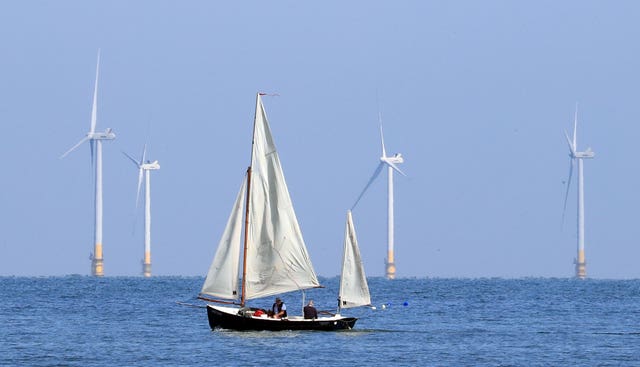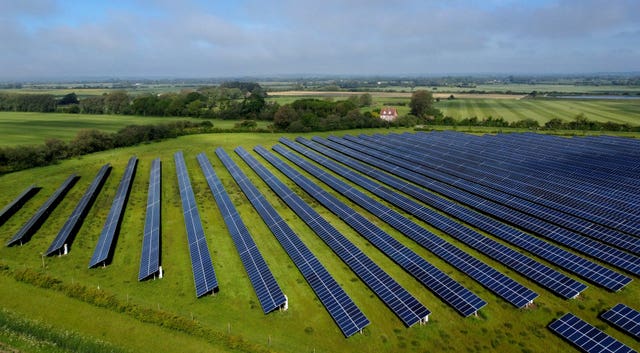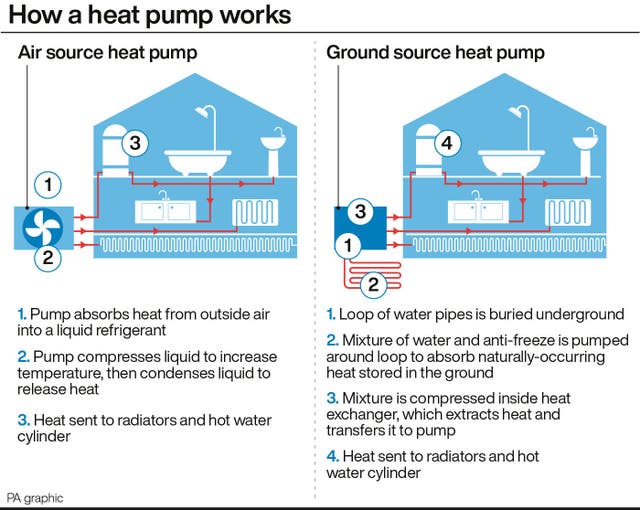
Tom Swarbrick 4pm - 6pm
7 April 2022, 15:14

The energy strategy has a focus on new nuclear, boosting offshore wind and doubling hydrogen production capacity.
The Government’s much delayed energy strategy focuses on securing UK energy supplies in the coming years, but has faced immediate criticism that it does nothing to help families with soaring bills now.
Here is what is, and is not, in the new strategy.
– Nuclear
There is a big focus on new nuclear, including smaller “modular” reactors, to replace Britain’s ageing fleet, with the Government hoping to get 25% of power supplies from the zero carbon technology by 2050.
That includes an aim to take the decision to go ahead with one project within the next two years and for another two projects in the five years after that, potentially progressing work on up to eight new reactors across those projects by 2030.
The nuclear industry has strongly welcomed the plans, which it says will create tens of thousands of new jobs and help to achieve energy security, but even industry groups acknowledged that new nuclear power stations will take well over a decade to build.
The Nuclear Industry Association said steps are now needed to speed up investment, such as removing barriers to getting projects started, money from a promised fund allocated “at pace” and sites made available for development.
But nuclear power remains relatively expensive, and the Liberal Democrats warned construction of the full eight reactors could add £96 a year to household energy bills.
– Offshore wind
As part of a drive to generate 95% of UK power from low carbon sources by 2030, with fossil fuels shrinking from around 40% today to 5%, the Government has set a new ambition for 50 gigawatts (GW) of offshore wind – up from a previous goal of 40GW.
The cost of offshore wind has fallen dramatically in the past few years, and the energy contracts windfarm operators have to deliver power are now significantly cheaper than the current wholesale electricity price which is driven by the high gas prices.

This means energy prices are lower than they would be without renewables on the system – a trend expected to continue as more, and cheaper, offshore wind is added to the grid.
– Onshore wind
Despite being one of the cheapest forms of electricity, along with solar, and widely popular with the public, onshore wind has effectively been banned by Tory governments in England for nearly a decade through planning restrictions.
The Government is not planning a wholesale change in the planning regulations for onshore wind.
It said it will “consult on developing local partnerships for a limited number of supportive communities in England who wish to host new onshore wind infrastructure in return for guaranteed lower energy bills”.
“The consultation will consider how clear support can be demonstrated by local communities, local authorities and MPs,” it said.
But Boris Johnson has said new sites “will have a very high bar to clear” and would have to reward local residents with cheaper energy.
– Hydrogen
The strategy doubles the target for hydrogen production by 2030, to 10 gigawatts, with the intention of making at least half of that using electricity, which could come from clean renewables.
Hydrogen is seen as a potentially clean way of shifting from the use of fossil fuels, as it could be an alternative fuel for power plants, industrial processes, heavy goods vehicles and even instead of heating with gas boilers.
But energy expert Jan Rosenow said: “Using hydrogen for home heating is much less efficient than heat pumps and district heating. All recent independent research agrees that hydrogen for home heating is costly.”
And he warned: “If the hydrogen is made from fossil gas it would mean that the UK would increase its dependence on fossil gas. This is because blue hydrogen from fossil can only be produced with a significant efficiency penalty.”

– Solar
The costs of solar power have also plummeted in the past decade, and the strategy expects to see a five-fold increase in deployment by 2035.
There will be a consultation on amending planning rules to strengthen policy in favour of development on non-protected land, while making sure communities still have a say, and moves to simplify planning permission for rooftop solar.
– Oil and gas
Promoting the new energy strategy, the Prime Minister said the Government was taking a “sensible and pragmatic view” on new North Sea oil and gas and said it was important to license domestic resources rather than importing higher carbon fossil fuels from Russia and other places.
But the International Energy Agency has said there should be no new oil and gas exploration after 2021 to meet targets to avoid the most dangerous warming, and UN scientists have called for the end of the fossil fuel age.
Onshore, while the Government has launched a review into the science of fracking, Business Secretary Kwasi Kwarteng has said shale gas would not deliver at a commercial scale for years, and would do nothing for bills now.

The Government’s independent Climate Change Committee has said the best way of reducing consumers’ exposure to volatile prices is to cut demand for fossil fuels, through developing more wind and solar power, electric vehicles, heat pumps and energy efficiency such as insulation in homes.
Yes, what about energy efficiency?
While the strategy highlights existing energy efficiency measures, there is nothing new on helping cut demand for gas and boost insulation – which is seen as the quickest way of reducing exposure to Russian gas and cut energy bills.
Analysis by climate think tank E3G finds that energy efficiency and clean heat such as heat pumps in homes could be implemented within this year, would reduce bills, and would cut gas use by the equivalent of 149% of current Russian imports by 2025.
A focus on insulation is also backed by the public, with a poll for the Energy and Climate Intelligence Unit finding that 84% thought it was important the Government should take steps to insulate homes to cut Russian gas.

– So what does it mean for bills?
By the Government’s own admission, the energy strategy will do little to reduce bills in the immediate term, though ministers say other policies will help.
This is a long-term strategy, with technologies such as nuclear, the scaling up of offshore wind, and tapping into further domestic oil and gas resources set to take years or even decades to deliver.
With households hit by an energy price hike of more than 50% in April and further rises looming in October, pressure is likely to mount on the Government to take more action to help make homes cosier and curb energy demand and bills.